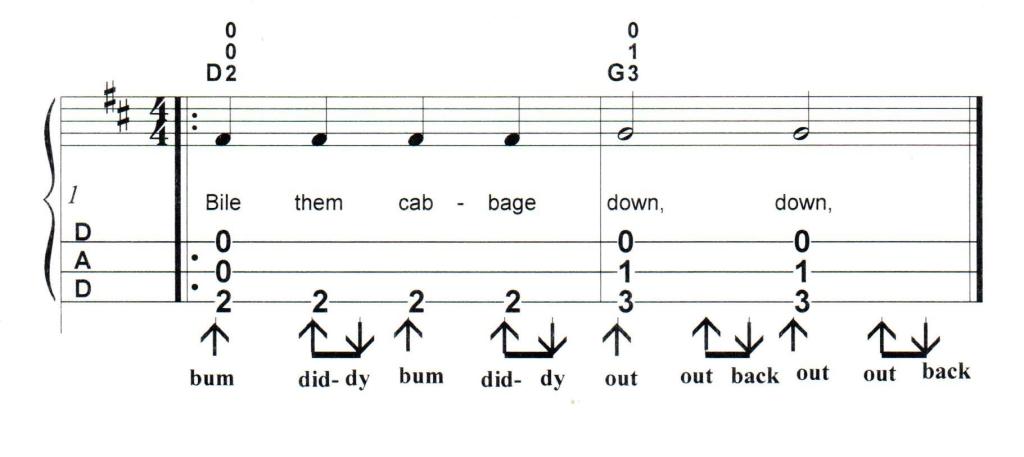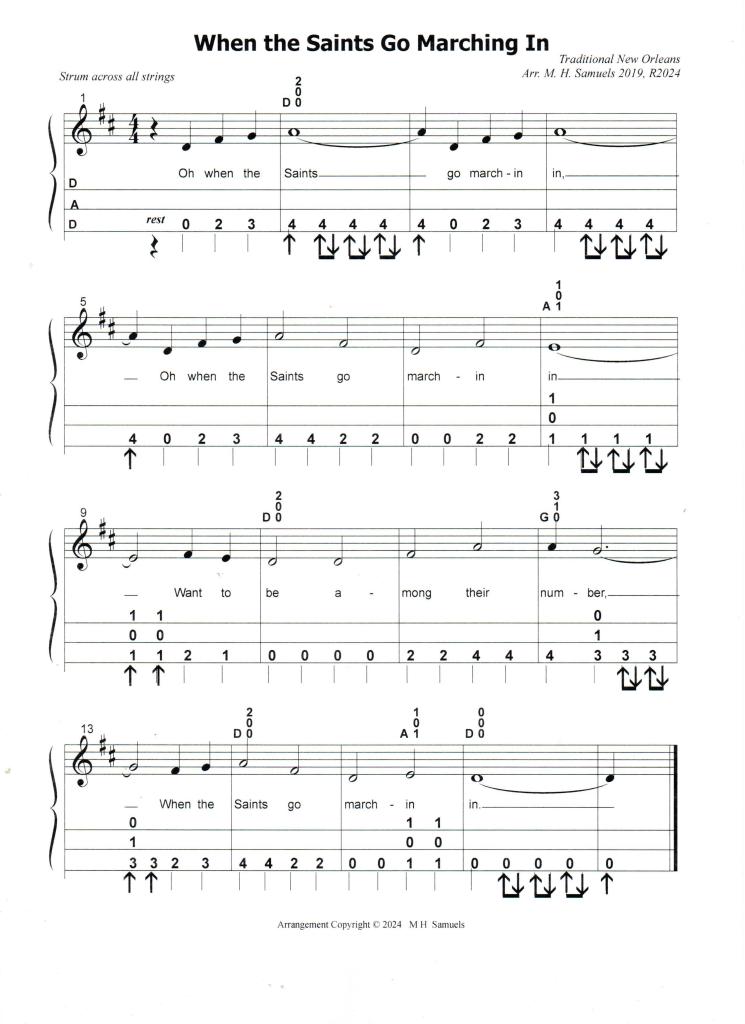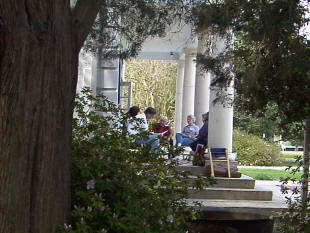“When the Saints Go Marchin’ In” is a classic New Orleans jazz gospel song. It has a strong, steady beat and a familiar melody. For these reasons, it is a good one for beginners to learn. I like to point out that the dulcimer is very much a rhythm instrument. Establish a steady strum with your right hand to the song’s beat, which soon becomes automatic, and then playing the melody with your left hand becomes much easier. The rhythm aspect of the dulcimer is true no matter what style of playing you use. Music has rhythm! Let it be the foundation of the song. It is difficult to walk down the streets of the touristry French Quarter in New Orleans without hearing the music of a jazz band somewhere in the distance coming from a bar or restaurant. Likewise, the parades during Mardi Gras are full of marching bands and other jazz groups. “When the Saints Go Marchin’ In” is sure to be played many times by many bands. The brass instruments and beat of the drums make this song a classic one. The song has a beat, it has rhythm. And it is easy to play on the dulcimer!

Bum Diddy Strumming Pattern
My playing style is very much influenced by my first dulcimer instructor at the Appalachian State Dulcimer Workshop in Boone, North Carolina, years ago. This dulcimer teacher emphasized strumming and we spent the mornings learning the “bum diddy” strum. Her instruction has stuck with me all these years and I try to pass this information along to the beginning dulcimer players whom I teach.
My instructor’s favorite strumming pattern was the “bum diddy” strum — or — the “out, out-back” strum. This strum has beat, it has rhythm. Something we could march to in a parade going down the street. From “Bile Them Cabbage” to “Kumbaya” — we used the “bum diddy” strumming pattern for every song. I’m not sure what else I learned, but I learned to strum! For years, I turned every song into a march with the “bum diddy” strum. Now, I realize that there are other ways to strum and play the dulcimer, too.

For the “bum diddy” strum, you always strum across all the strings in the same direction on each beat. Strum outwards on the first beat. The second beat, is an “out back” strum and these are eighth notes. You strum both out and back across the strings in the space of one beat. This strum pattern continues throughout the song.

Strumming Nemesis
Strumming seems to have several extremes and it is easy to get stuck doing things in only one way. Rather than a “bum diddy” strum, many dulcimer players learn to strum only in an outward (or inward) direction. This can become slow and cumbersome when tyring to play eighth notes, triplets or a fast fiddle tune.
It is easy to forget that a string has two sides and you can sound the strings when strumming in both directions — outward and inward. The art of strumming in a “back and forth” motion is so important that I spend alot of time teaching and playing it — rather than the “bum diddy” strum.
“When the Saints Go Marchin’ In” lends itself to “back and forth” strumming. There are lots of extended notes in this song which benefit when they are filled in with “out and back” strums. This strumming style differs from a “bum diddy” strum. For this song, strum outward on the first beat. Then strum out – back on the remaining beats in the measure. Your pick sounds going in both directions across the string.

Origins of “When the Saints Go Marchin’ In”
The origins of the song, “When the Saints Go Marchin’ In,” are unclear. It is an old, black spritual which seems to have originated in New Orleans. Although many artists recorded versions of the song in the 1920s, it was Louis Armstrong’s hit recording in 1938 which is credited with popularizing the song, as well as himself. Armstrong states that he sang the song as a young boy. (He was born in 1901.) The song has been recorded and played by many other artists since that time — including Fats Donimo — and is now a jazz standard.
The melody is traditionally used as a funeral march with the brass band following the funeral procession to the cemetery. The song is played as a dirge going to the cemetery. On the return trip from the cemetary back to the church, after the the interment, the jazz band switches to the familiar upbeat or Dixieland style of playing.
Playing “When the Saint’s Go Marchin’ In” on the Dulcimer
For the tablature to this arrangement on the dulcimer, I filled in all the extra notes with tablature numbers, so that there is a tab number for each beat. Strum on each beat as if you were marching along with the brass band down the street. Use “out and back” strums — each one is an eighth note — on the beats of the whole notes. Even though there is no tablature numbers, strum across all the strings on this song.
I encourage beginning dulcimer players to practice strumming on the dulcimer three ways: 1. strum outwards on each beat; 2. strum out and back on each beat and 3. then practice the “bum diddy” strum. These strumming patterns should become so automatic that you can carry on a conversation while continuing to strum! Strumming is just “muscle memory” and the more practice strumming the better you become.
“When the Saints Go Marching In” is easy to play on the dulcimer– give it some swagger. Welcome to New Orleans!

Here is a PDF version for you to download, play and share!
References:


